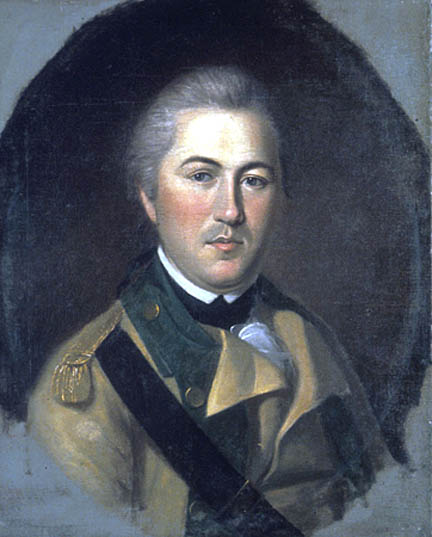
 |
||||||||||
HENRY LEE 1756-1818 Charles Willson Peale, from life, c. 17827 Oil on canvas. H 23, W 19 in (H 58.4, W 48.3 cm) Independence NHP INDE 14041
|
||||||||||
| About this Portrait: As one of the Revolution's most celebrated commanders, Lee was a natural subject for Peale's Museum. The portrait is listed in the October 13, 1784 issue of the Freeman's Journal and Philadelphia Daily Advertiser. The artist may have painted this portrait as early as 1782 when Lee came to Philadelphia to receive his Congressional commendation for the victory at Paulus Hook and to resign his military commission. Sometime in 1785, "Light Horse Harry" sat for Peale a second time when the artist painted a miniature of him (now in a private collection) that remained in the museum collection until Peale's death. Ownership History: Listed in the 1795 Peale Museum catalog. Purchased by the City of Philadelphia at the 1854 Peale Museum sale. |
||||||||||
|
||||||||||
|
|
||
|
Note: Prev/next are in alphabetic order within their respective theaters. |
||
Last Modified: